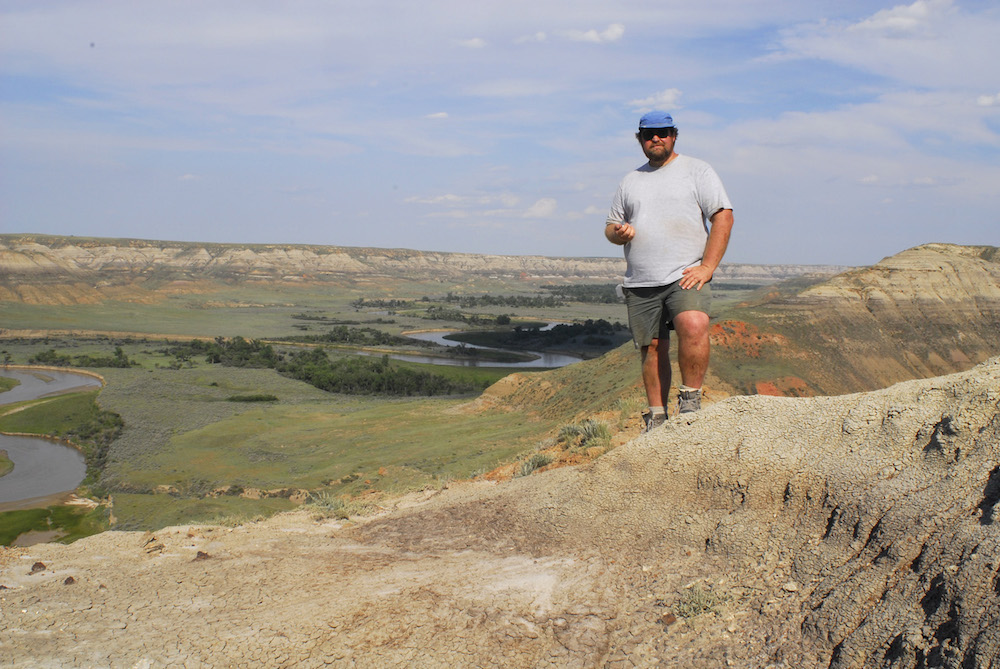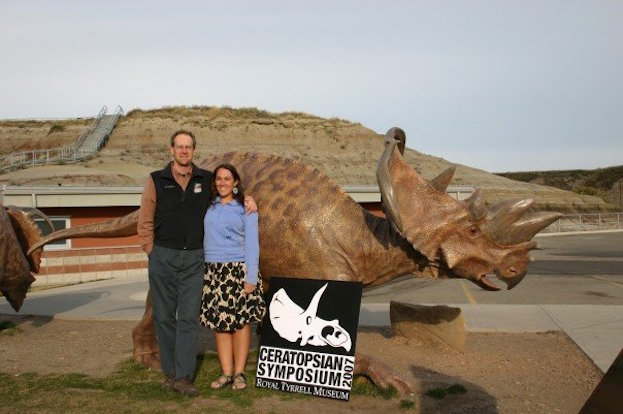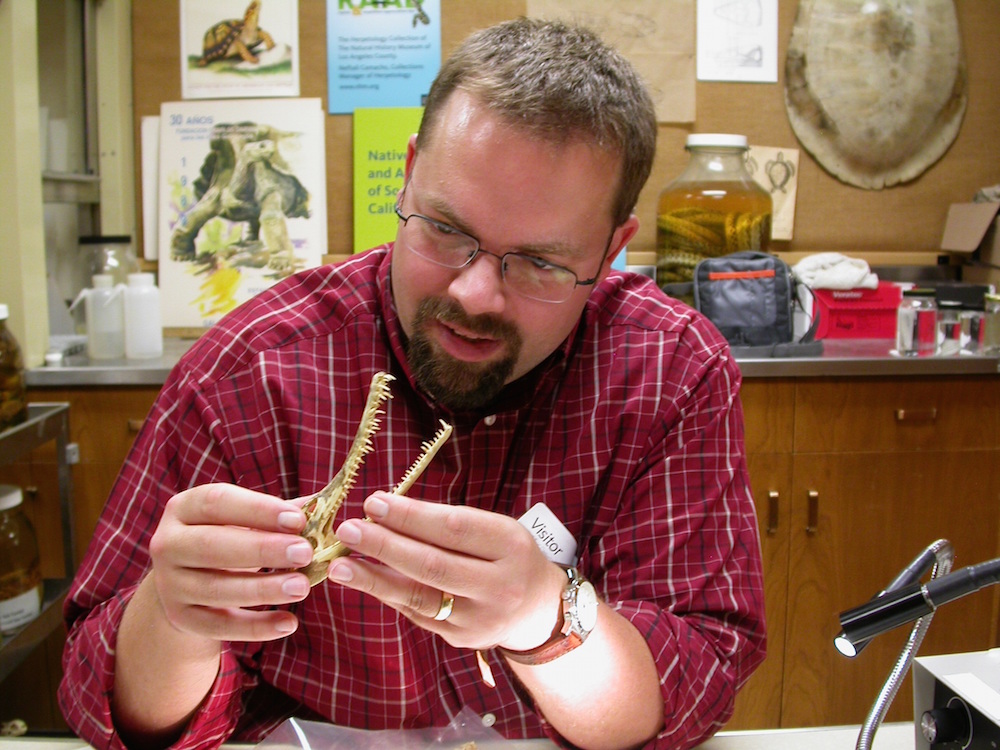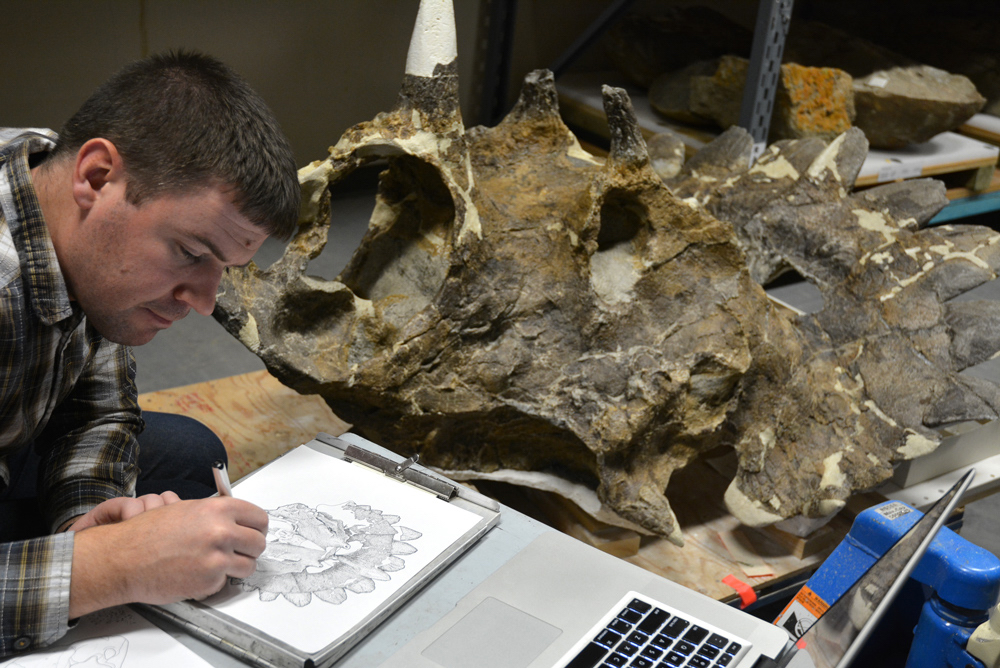'Jurassic World' Has Awesome Dinos, Iffy Science

The summer blockbuster "Jurassic World" roared through its opening weekend, showing moviegoers Hollywood's version of baby Triceratops, armored ankylosaurus and long-necked sauropods, as well as a terrifying genetically engineered hybrid named Indominus rex.
But how accurate are these dinosaur depictions? Live Science asked seven paleontologists to scientifically assess the film and its beastly characters. Their analyses revealed dinosaur faux pas, from the lack of dinosaur feathers to the strangely long arms of Indominus rex.
Caution: spoilers ahead. [Wipe Out: History's Most Mysterious Extinctions]
1. Steve Brusatte, a paleontologist at the University of Edinburgh
I usually see movies on airplanes, as I'm traveling around digging up fossils, but I'm glad that I saw "Jurassic World" on the big screen. It was a spectacle: a monster movie starring dinosaurs, with a clever story line and fast-paced action, and I think it's rescued the long-maligned "Jurassic Park" franchise.
I would feel like a prude criticizing the science too much. This film is meant to be an edge-of-your seat summer blockbuster, not a documentary. Yes, the mosasaur is far too big, the raptors hold their hands wrong, the pterosaurs wouldn't be strong enough to pluck up park-goers as they whizzed down from the sky. But I don’t think these things matter very much. What does matter is that a whole new generation will be wowed by the awesomeness of dinosaurs, the same way I was inspired in 1993 when a 9-year-old version of myself, who hated science class, begged my parents to take me to see "Jurassic Park." (A mosasaur is a large extinct marine reptile.)
If you want to learn what dinosaurs were really like, I would recommend our recent National Geographic Channel show "T. rex Autopsy." If you want to have some fun, watch some amazing actors at work, and be entertained by dinosaurs that are bigger, scarier, toothier than anything you've ever seen, then check out "Jurassic World." [Gory Guts: See Photos of a T. Rex Autopsy]
Get the world’s most fascinating discoveries delivered straight to your inbox.
2. Michael Ryan, the curator and head of vertebrate paleontology at the Cleveland Museum of Natural History
"Jurassic Park" promised every child that they would see dinosaurs based on the most up-to-date research. It inspired a new generation of paleontologists — the "Jurassic Park bubble" — who are now establishing careers and pushing dinosaur research into new areas not dreamed of in 1993. Alas, "Jurassic World" incorporates none of the new paleontological findings (e.g., feathered theropods) that could have made "Jurassic World" the real game changer that "Jurassic Park" was in how the public views dinosaurs, and by extension, science. [Images: These Downy Dinosaurs Sported Feathers]
I realize that a film has only one goal, to make money, and, maybe to be entertaining. "Jurassic World" has achieved both, but it could easily have given us "modern" dinosaurs without sacrificing the story. Instead, it rehashes the same dinosaurs we saw previously without bothering to correct their most basic inaccuracies; even the venom-spitting Dilophosaurus makes a cameo, and why aren't the Triceratops forelimbs splayed? [There is no evidence that theropod Dilophosaurus, let alone any dinosaur, spit venom.]
"Jurassic World" spends the first half of the movie telling us that we're watching monsters — not dinosaurs — but, really, what's the point in that? Monster movies are a dime a dozen; life-changing dino movies are a rarity and getting rarer. Where's Willis O'Brien [the "King Kong" special effects technician] when we need him?
3. ReBecca Hunt-Foster, the Bureau of Land Management Canyon Country District paleontologist, and John Foster, the director of the Museum of Moab
"Jurassic World" is fun, in a way the original movie was. But as for the accuracy of the formerly extinct creatures, there seems little point in worrying about this as they are explained away as inaccurate — a significant departure from the original film. [Actor] B.D. Wong's Dr. Wu fully admits here that the resurrected animals are, as Dr. Grant put it in the previous installment, genetically modified "theme park monsters, nothing more, nothing less."
The herbivores (mostly ceratopsians, hadrosaurs, stegosaurs and sauropods) fair reasonably well in their physical depiction as compared to the highly modified carnivores such as the dromaeosaurs [also called raptors], which, in addition to their now-notorious lack of feathers, still have twice the body size and a very different skull shape from actual Velociraptor's. The mosasaur in the film is about twice the size of the largest-known fossil form and is probably three times the size of an average one. We doubt pterosaurs ever pulled off pelican- or bald eagle-style dives into the water and then transitioned into deep-swimming penguin mode, although many species did eat fish. We also wonder why, regardless of modification, the diversity of dinosaurs depicted from so many times and places lacked much variety of color patterns.
Despite a few modifications generally, if conveniently, explained in the dialogue, the animals still are enjoyable to see reconstructed. Get your facts about these animals from museum displays, the books written by paleontologists and science writers, and even from bravely delving into open-access paleontology research articles. Go to the movie to have fun — we did!
4. Mathew Wedel, an associate professor of anatomy at Western University of Health Sciences in Pomona, California
"Jurassic World" is a straight-up monster movie. It doesn't claim to be scientifically accurate, and it's not. But the movie embodies a profound irony, hammering the point that public interest wanes unless people are regularly stimulated by new spectacles. So it's odd that the moviemakers chose to feature distinctly retro recreations, instead of blowing people's minds with everything we've learned in the last quarter century, from four-winged raptors and shark-tailed mosasaurs to shaggy ceratopsians and, yes, feathery tyrannosaurs. [Avian Ancestors: Dinosaurs That Learned to Fly]
Fortunately "Jurassic World" stands alone — almost everywhere else you look, online and in bookstores, you can find depictions of prehistoric life that are more accurate and more interesting. The golden age of dinosaur science is going on right now. And increasingly it's being communicated directly to the public by paleontologists who publish in open-access journals and blog about their work.
I hope that "Jurassic World" fires the imaginations of a whole new generation of kids, who realize that they can engage with science in ways that didn't exist a few years ago. As paleontology, "Jurassic World" is dismal. As a popcorn movie, it's pretty good. As a funnel for people who want to know the science behind — no, beyond — the movie, it might be spectacular.
5. Matt Lamanna, an assistant curator of vertebrate paleontology at the Carnegie Museum of Natural History in Pittsburgh
I liked "Jurassic World." Although, as has already been pointed out by others, the accuracy of the dinosaurs leaves something to be desired, there are some cool scientific tidbits in there, too. The not-so-subtle nod to the dinosaur ancestry of birds in the beginning was great, as was the younger kid spouting off about discoveries of biomolecules preserved in dinosaur bones. And they even put the nostrils of the Apatosaurus in the right place!
I personally wasn't too offended by the featherless, semi-domesticated raptor pack — after all, they're supposed to look and act badass, and they do. I wanted one of my own by the end of the movie. And the final battle had me (and just about everybody else in the theater) clapping and cheering like it was 1993 again.
Yeah, there are some dopey moments, but all in all the film is a lot of fun. I don't know that "Jurassic World" will have quite the impact on paleontology that its predecessors did, but it's certainly not going to hurt people's interests in dinosaurs either. And any movie that might inspire someone to care about science is good in my book.
6. Caleb Brown, a postdoctoral fellow at the Royal Tyrrell Museum of Palaeontology
I saw the film this weekend, appropriately at the local theatre in Drumheller, Alberta — the dinosaur capital of the world. In general the film was entertaining and engaging. It fit the mold of what a summer blockbuster should be. [Paleo-Art: Dinosaurs Come to Life in Stunning Illustrations]
In terms of the scientific accuracy, my main criticism is that the portrayal of the dinosaurs in the film has not significantly changed since the original "Jurassic Park" movie in 1993, 22 years ago. The portrayal of the dinosaurs in "Jurassic Park" was the first time that lifelike, intelligent and fast dinosaurs were brought to life on film. As a result the movie helped to change the public perception of dinosaurs, including new ideas about dinosaurs based on current research, and had an effect on the science itself.
In the time since "Jurassic Park," the amount of research on dinosaurs has only increased, but very little (if any) of this new research is reflected in "Jurassic World." The most talked-about failing of the new "Jurassic World" movie is likely the lack of feathers in many of dinosaur species. We now know that species like Velociraptor and Gallimimus would have had feathers, and this would likely have been true for other theropods as well, including Tyrannosaurus. This remains the largest failing of the movie because its absence is very visual, and because it undermines one of the greatest paleontological discoveries of the last several decades — that birds are in fact dinosaurs. Without spoiling the movie, the close relationship between birds and dinosaurs is hinted at in "Jurassic World," as it was in "Jurassic Park," something I think many paleontologists will appreciate despite the lack of feathers.
Regardless of the perceived scientific accuracies and inaccuracies of "Jurassic World," hopefully its success will increase the public profile of palaeontological research, and, as with "Jurassic Park," instill interest in this exciting field.
7. Kenneth Lacovara, a professor of paleontology and geology at Drexel University
"Jurassic World" is not a textbook; it's not a peer-reviewed paper. It's a fun summer monster movie, and on that level it really works.
Could they have done better getting the science right? Sure. We're in a second golden age of dinosaur paleontology and new technologies are constantly being brought to bear to help us understand these amazing creatures. Advances in 3D imaging, biomechanical modeling and molecular paleontology are allowing us for the first time to view dinosaurs and other extinct creatures in some of the same ways biologists study creatures alive today.
To pick nits with "Jurassic World," Velociraptor should be small — turkey-sized — and lavishly plumed. T. rex should have featherlike structures, too, and pterosaurs (which could never lift a person) should be fuzzy. [T. Rex at 20: How 'Jurassic Park' Science Has Evolved]
Kudos to "Jurassic World" for including the extremely awesome palate teeth of the mosasaur, a second set of teeth that prevented their prey from swimming back out, but the marine reptile they depicted, like a bucket of movie popcorn, was a bit too large to be reasonable. The "Jurassic World" DNA Excavators were an interesting touch, but truly ancient DNA has never been recovered. DNA from sub-fossils such as Neanderthals and woolly mammoths has been isolated, but these species lived with our own during the not-too-distant Pleistocene Epoch [about 2.6 million to 11,700 years ago].
The real breakthrough in molecular paleontology has been the recovery of endogenous proteins from ancient dinosaurs, work pioneered since the first "Jurassic Park" by Mary Schweitzer. Of course, if you play the "genetically modified hybrid" card, you gain immense artistic license. In "Jurassic World," the fictitious Indominus rex sported several "improvements" over plain-old Tyrannosaurus rex, such as a pair of long, severely clawed arms.
In reality, despite the inexhaustible supply of T. rex-has-short-arms jokes on the Internet, Tyrannosaurus rex, like all organisms, was exquisitely adapted to its environment — it had the arms it needed, as is evidenced by its success. Longer arms on a T. rexdoes not necessarily confer a selective advantage. In fact, they would require more energy to grow and maintain, present additional area to sustain injury, and provide additional tissue for infections to set in.
Sure, Indominus rex, with its long arms,could have put on its hat, answered the phone and done push-ups with Chuck Norris, but I'm not sure it would have outcompeted T. rex, the tyrant king, in the hardscrabble jungles of the Cretaceous. But enough of these pedantic quibbles. Go enjoy the monster movie. It's spectacular!
Follow Laura Geggel on Twitter @LauraGeggel. Follow Live Science @livescience, Facebook & Google+. Original article on Live Science.

Laura is the managing editor at Live Science. She also runs the archaeology section and the Life's Little Mysteries series. Her work has appeared in The New York Times, Scholastic, Popular Science and Spectrum, a site on autism research. She has won multiple awards from the Society of Professional Journalists and the Washington Newspaper Publishers Association for her reporting at a weekly newspaper near Seattle. Laura holds a bachelor's degree in English literature and psychology from Washington University in St. Louis and a master's degree in science writing from NYU.
 Live Science Plus
Live Science Plus












